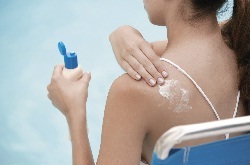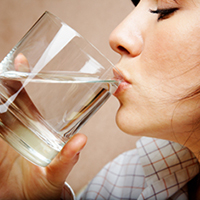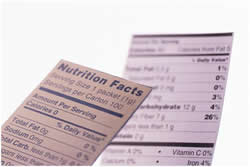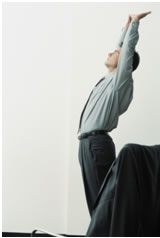- Home
- Program
- Contact
- Blog
- Free Body Fat Analysis
- Free Resources
- Chad White lost 35 pounds with Dr. Sattele's Rapid Weight Loss Program
- Kay Moore lost 89 pounds with Dr. Sattele's Rapid Weight Loss Program
- Jennie McKenzie lost 60 pounds with Dr. Sattele's Rapid Weight Loss Program
- Tina Askin tina lost 75 pounds and went from a size 20 to size 8 with Dr. Sattele's Rapid Weight Loss Program
- Thank You
- More
- August- VIP Deals
- Special Offers
- GLP-1 Medication for Weight Loss
- Meet Dr. Sattele
- Rapid Weight Loss Program with HCG
- EZDietPlanner Mobile App
- Before & After Photos
- Success Story Videos
- Body Slimming Procedures
- Skin Care Procedures
- Blog
- Free Body Fat Analysis
- Free Resources
- Chad White lost 35 pounds with Dr. Sattele's Rapid Weight Loss Program
- Kay Moore lost 89 pounds with Dr. Sattele's Rapid Weight Loss Program
- Jennie McKenzie lost 60 pounds with Dr. Sattele's Rapid Weight Loss Program
- Tina Askin tina lost 75 pounds and went from a size 20 to size 8 with Dr. Sattele's Rapid Weight Loss Program
- Thank You
 Did you know that the skin is the largest organ of the body?
Did you know that the skin is the largest organ of the body?It happens to reside on the outside of the body, protecting other organs within. The skin allows oxygen and other nutrients to be absorbed while preventing harmful substances from entering. It also excretes waste products that are harmful to the body. The skin also acts like a crystal ball. It mirrors the health of the inside of our bodies. When something is out of whack there, the skin will show the world and you.
As the weather gets warmer, we all want to shed the heavy clothing and invite the sun in. Unfortunately, the sun can be harsh on tender skin. So, how can you keep your skin looking great - especially during the summer months when you want to show it off? Here are a few beauty secrets anyone can utilize.
Here are a few beauty tips to help keep your skin healthy in the hottest weather:
• Drink water – Water is important for the body. The majority of our cells are composed of water. Without it, the body cannot function. Each day, we lose water through sweat, respiration and urination. It must be replenished. Remember, when you feel thirsty, you are already in the process of becoming dehydrated.
• Remove dead skin cells – This is often done through exfoliation. Using a sugar scrub once a week can remove excess dead skin cells from the body and the face. Exfoliation also prevents pores from being clogged, resulting in pimples.
• Make good food choices – Eating a lot of fat can lead to an acne problem with the skin. It can also add fat to your body. In the summer, everyone wants to go light. Choose salads and sandwiches instead of fried foods. Eat smaller meals more often instead of three heavier ones.
• Wear a hat – When you are out in the sun, wearing a hat protects the sensitive skin of your face from not only the sun but also from wind damage.
• Wear sunscreen – Even if you are gardening, sunscreen is important. Without a layer of protection between you and the sun, the harmful UV rays are allowed to penetrate the deeper layers of the skin and damage them. Use the strongest SPF you can find – at least 50 – even when out in the sun for only 30 minutes. Reapply every two hours.
• Moisturize – The heat can dry out your skin. After a long day outside, bathe and then moisturize your skin so that it can stay supple even while you sleep. Use a light one so that you are not in danger of clogging your pores.
Is your skin ready for the summer sun? In order to keep it looking good, protect it first.
 With swimsuit season right around the corner, if your body isn't quite looking the way you'd like it to look, here are a few healthy eating tips to help you get into shape by the time you hit the beach.
With swimsuit season right around the corner, if your body isn't quite looking the way you'd like it to look, here are a few healthy eating tips to help you get into shape by the time you hit the beach.Begin by keeping a picture of your dream swimsuit nearby to help keep you motivated to eat healthier. Don’t be hasty and go out and purchase your swimsuit before you get into shape. Wait until you feel good about yourself and the work you've done to tone up. Then shop to your heart’s content. The bonus is the closer you get to summer the more sales you'll find!
Eating for your summer body is not about starvation. For someone to stick to a new way of eating, it has to become a lifestyle change. This means that your diet has to provide both healthy foods and a few pleasures to keep you interested. Moderation is key.
 Water is a fantastic way to fill the gaps between meals. When your mouth wants to be busy, say around 3:00 in the afternoon when dinner is still a few hours away, a cold glass of water can help take your mind off of the snacking habit.
Water is a fantastic way to fill the gaps between meals. When your mouth wants to be busy, say around 3:00 in the afternoon when dinner is still a few hours away, a cold glass of water can help take your mind off of the snacking habit.What’s wrong with soda or diet soda?
Scientists and health advocates blame soda for a wide variety of ailments ranging from tooth decay to diabetes, even cancer! The reason is simple: beyond high-fructose corn syrup, which is pure sugar, the remaining ingredients are chemicals.
What about diet soda, you may ask; it doesn’t have any sugar. True, instead it has more chemicals and many scientists believe that these chemicals and artificial sweeteners in particular need to be studied more thoroughly. There is a general consensus among those in the medical industry that artificial sweeteners play some role in the epidemic of obesity in the world.
How much water is necessary?
The advice for years was that we should look to drink eight glasses of water a day. Since those guidelines first came out, the composition of people has changed. We are a larger nation and eight glasses of water is not necessarily enough for all body types and activity levels.Therefore, eight glasses a day is a start (drink an extra 8 oz of water for every 25 pounds overweight).
For men, consuming closer to twelve glasses is more accurate. As for women, eight to ten is a good start. But, you can always drink more. In fact, if you exercise a lot or your work is very physical where you are sweating, replacing that fluid loss is crucial. To ensure that you are getting enough water, start by replacing what you have lost. Not only do you sweat but you also urinate. Replace cup for cup to meet the basic needs of the body, but drink more for optimum function.
Not happy with water?
Many people don’t like to drink plain water. Like many healthy goals, it helps to make small changes. So if you can't drink 8 glasses of water a day, start with 4 glasses and try that for a week. Once you’ve got the hang of that, you can gradually increase your daily intake.
To make your water more palatable, spruce it up with a sugar-free flavor packet or a bit of lemon juice. Or consider drinking the flavored and carbonated water that is now available at most grocery stores. Take care to make sure that the water has no additional sugar or artificial sweeteners. Mineral waters, carbonated or non-carbonated, also offer an appealing alternative.
When it comes right down to it, water really is the best thing for your body. It hydrates your cells, cleanses your body and helps you lose weight, stay healthy and feel better..
 Eating too much sugar is not healthy for you. Most people would agree with this. Yet, we are still getting way too much of it in our diet. Why?
Eating too much sugar is not healthy for you. Most people would agree with this. Yet, we are still getting way too much of it in our diet. Why? If you have ever read a food label then you know how confusing they can be. Once you get past simple ingredients like milk, water, corn and cheese, things begin to get a little dicey. How do you read those labels?
Sugar is a carbohydrate. It is called a simple carbohydrate because it is metabolized easier. It doesn't need extra energy to be broken down. In fact, if you've ever had a sugary snack, your blood sugar spikes right away. You get energy for about thirty minutes and then feel like you are sinking through the floor.
Sugars are also used to preserve foods. You normally think of salt, but sugar is used in processed foods in other forms. If you see the word "sugar" on the label you may think twice about using the product. But, when other words are used for sugar, it can be harder to distinguish.
Start by looking at the carbohydrate count on the nutrition label. Under carbohydrates you will see a total carbohydrate measurement and then a breakdown to sugars and fiber. If the sugar number is most of the carbohydrate number then there is more than a lot of sugar in that food item.
Now, look at the ingredient list. Sugar has many scientific names. Foods that end in "-ose" or "-ase" contains sugar. Substances like fructose, maltose and sucrose are all trade names for sugar. Also look for sweet ingredients like molasses, syrup (of any kind), agave nectar and cane sugar.
Some foods have natural sugars. If a food contains strawberries, the label would have strawberries on the list. Strawberries have natural sugar and that is not listed separately because it is a part of the fruit.
There are also sugar alcohols like sorbitol and xylitol. They are composed of sugar and alcohol groups in their chemical make-up. They have less calories and less of an impact on your blood sugar. Xylitol is used in sugarless gum instead of other sweeteners with side effects. But, you do need to note the amount of sugar alcohols in your food. Since they are not completely absorbed by the body, an excess of them can lead to diarrhea or bloating.
Also, ingredients on food labels are supposed to be listed in order of percentage in that food. If these disguised sugars appear near the top of the list, then they are a bigger portion of the calories than may be alluded to on the front of the box.
If you are trying to lower your sugar intake, read the food labels. You may be getting more than you bargained for.
 Carpenters and factory workers have no problem getting exercise and burning calories during their workday. However, for the large population of office workers it can be a real challenge.
Carpenters and factory workers have no problem getting exercise and burning calories during their workday. However, for the large population of office workers it can be a real challenge. So how does someone who sits for most of the day burn calories and stay fit?
Here just some of the ways you can be more active while at your desk.
• Stand up and get a good stretch. Raise one arm over your head and tilt toward the opposite side for 10-15 seconds. Switch the phone to the other hand and do the same thing with the opposite side. A few repetitions will perk you right up.
• While sitting, raise each leg toward your chest using your hands to assist you. Continue as above to stretch your hamstrings and gluteal muscles.
• Stand and march in place. Don't aim for a true aerobic workout though, just get your body moving for a few minutes to increase circulation and jumpstart your metabolism.
• Put your feet together and pull your legs up to be parallel with the floor. Hold for about ten seconds. Do this six or seven times to help burn calories and strengthen your quadriceps and abdominal muscles.
• Bring dumbbells to work. Keep them in a drawer for times like these when you can use them to strengthen your biceps and deltoid muscles. With your arms at your side, raise the weights by bending at the elbow. Then raise the weights toward the ceiling. Alternate this with raising the weights sideways. Go from the resting position and raise it as high as you can toward the ceiling and hold for seven to ten seconds. Repeat six or seven times for each arm.
Why not get active during your break instead of heading to the vending machines for a can of cola to drink with that bag of chips or candy bar? Consider stepping outside when the weather permits. Take a short walk around the building or parking lot to burn some calories. If it's raining or snowing and room permits, walk around inside the building.
Some companies provide exercise equipment for their employees. Consider them an employee benefit just like your 401-K make use of them.
If you work at home you have the added freedom of exercising almost anytime you like. Get up and stretch frequently. Alternate your office work time with housework and aerobic exercise to keep you from getting sluggish. Burn calories every chance you get.
It won't be long before you begin to see and feel the rewards for the positive change you've made. You'll feel better and be more productive. And don't forget that you'll reap the rewards of better sleep and a slimmer waist line.
© Physicians Marketing Solutions Inc. All rights reserved.
